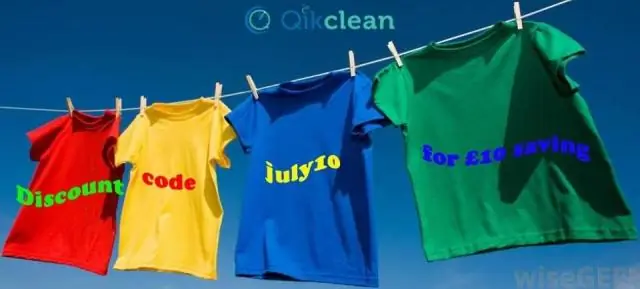
Table of contents:
- Author Bailey Albertson [email protected].
- Public 2023-12-17 12:53.
- Last modified 2025-06-01 07:32.
We save clothes from rust

The reason for rusty stains on things is a bunch of keys left in a wet jacket, and a joint washing of a jacket with slightly rusted metal fittings and your favorite blouses. But everyone is quite capable of saving clothes, knowing the secrets of wise housewives.
Content
-
1 How to clean clothes and linen from rust
-
1.1 Industrial facilities
1.1.1 Table: features of using stain removers
- 1.2 Express methods for removing fresh stains
-
1.3 Folk ways to remove rust
- 1.3.1 Citric acid
- 1.3.2 Video: how to remove rust with citric acid
- 1.3.3 Tartaric, acetic, oxalic acids
- 1.3.4 Glycerin and chalk
- 1.3.5 Ammonium, peroxide
- 1.3.6 Tomato juice, gasoline
- 1.3.7 Plumbing cleaners
- 1.3.8 Video: how to remove rust with a special tool
-
1.4 Machine wash
1.4.1 Video: how to remove rust with washing powder
-
- 2 Table: Reminder for removing rust marks from different types of fabric
- 3 Tips of housewives
How to remove rust from clothes and linen
Special and folk remedies will help get rid of rust at home. Both chemistry and improvised means will relieve textiles and skin from unpleasant traces. The cleaning method is selected according to the type of fabric.
Industrial facilities
Special stain removers are designed to become reliable helpers for the modern consumer. It is enough to strictly follow the instructions - and no traces of rust will remain. Rust Remover, FeedBack OXY Color, Dr. Beckmann, ARENAS-exet 3, Stain Ex 3, Dr. CLEAN.

A universal stain remover is good because it helps to solve several problems at once.
Table: features of using stain removers
| Name | Features: | Appointment |
| Rust Remover based on phosphoric acid |
|
|
| FeedBack OXY Color |
|
Oxygen stain remover for colored and white items. |
| Dr. Beckmann stain remover |
|
Universal stain remover. Removes rusty streaks from thin tulle. |
| ARENAS- exet 3 |
|
Special stain remover, used for pre-cleaning from rust before machine washing. |
| Stain Ex 3 |
|
Professional stain remover with oxalic acid. |
| Dr. CLEAN |
|
Universal stain remover. |
Before using any of the industrial stain removers, you must read the instructions and strictly follow them.
Usually, the products are applied to the traces of oxidation, left for 5 minutes and washed off. Products are washed with soap and checked to see if the contamination has disappeared. More than one treatment may be required.
Since not all materials are equally durable, it is wise to test the result on an inconspicuous area of the garment before use. The product should be used if the result is positive. Otherwise, there is a high risk of hopelessly spoiling the material.
The disadvantage of all industrial products is their considerable cost and high allergenicity.
Express methods for removing fresh stains
Removing fresh dirt is much easier. It is important to start work immediately after detecting a problem, before the rust has penetrated deep into the threads. Washing will not help; the stain will change from brown to yellow, spreading over the fabric.
The fastest way is to use stain removers. Effective means that are used against rust and on plumbing, based on oxalic, for example, "Fixanal", "Sarma", and acetic acids. The preparations are applied to the contamination and left until the reaction begins. Then the item is rinsed and washed.
Be sure to wear gloves. Better to act outdoors, or at least with an open window in the ventilation mode.
Folk ways to remove rust
If you are dissatisfied with the use of stain removers for various reasons, choose folk methods. The acids are most effective against traces of iron oxidation.
Lemon acid
Citric acid or ascorbic acid is always at home. There are several ways to prepare a product for different things. Classic recipe:
- 20 grams of the substance, diluted with half a glass of water, mixed.
- The mixture is heated without boiling. The product is soaked in the solution, left for 5-10 minutes.
- Then rinse. For old stains, one approach is not enough, repeated processing is required.
An obvious plus - the fabric is not damaged. It is safe to soak not only the dirty area, but the entire product.
Spots on dark clothes are poured with hot lemon juice. The products are rinsed several times, ironed with a heated iron through dry gauze.

Instead of juice, you can put a slice of lemon wrapped in gauze over the rusty mark
Ironing is therefore not suitable for melting artificial fabrics. Viscose, nylon and other materials are washed with the addition of half a glass of lemon juice and the same amount of water. You can replace fresh juice with ascorbic acid. After processing - soak for 15 minutes in liquid powder and wash.
To clean denim, a sponge is moistened in citrus juice. The contamination is covered with a napkin and ironed through it.
You can water the stain with lemon juice several times and warm it up with a hairdryer the same number of times. At the end of the treatment, the product is washed in soapy water.
A swimsuit damaged by red stains is covered with ascorbic acid to discolor the stains, or the stain is wiped off with a solution of ascorbic acid and hot water. The cleaned item is rinsed with clean water and washed.
For half an hour immersed in an acidic solution and a soiled towel. Stubborn dirt is left on for another 15 minutes. Rinse the towel with cool water. If traces of rust remain, hand washing will help. The contamination is previously vigorously wiped off with a liquid powder.
Towel stains will help remove lemon juice and salt:
- The towel is placed on several paper napkins, stains up.
- Sprinkle the dirt with salt.
- Cut a lemon in half. The pulp is intensively rubbed on the spot with the stain.
- Cover the stained area with a few more paper towels. Leave to dry for 2 hours in the sun.
- The stain will gradually fade. Next is a regular wash.
If there is no time for washing, you can stretch a cloth over a container of boiling water, sprinkle the stain with citric acid, or pour citrus juice. Leave the product for 5 minutes, rinse. If the spots persist, repeat the procedure.
Video: how to remove rust with citric acid
The method of using sodium hydrosulfite (thiosulfate), which can be purchased at the pharmacy, is similar. The only difference is the dosage. Take 20 grams of powder in a glass of water. But this method is not suitable for colored clothes, as the paint on the fabric will fade.
Tartaric, acetic, oxalic acids
Tartaric acid with salt is also effective:
- The components are mixed equally.
- Top up with cool water until creamy.
- The product is applied to the stain, slightly pulling off the dirt.
- Spread the product in the sun.
- The cleaned fabric is rinsed, washed, rinsed again.
9% table vinegar is effective:
- 2 large tablespoons of the product are diluted with a glass of water, heated to 70-80C.
- The stained product is soaked, leaving the thing until the stain disappears. The time varies depending on the resistance of the dirt and its size.
Diluted acetic acid works well:
- Dilute 2-3 large tablespoons of acetic acid in a glass of cool water.
- The thing is soaked in the solution for 2-3 hours, then rinse and wash.
An effective means for cleaning silk and woolen products:
- 5 large spoons of acid are diluted in 7 liters of heated water.
- In the resulting solution, leave the thing soaked for 10-12 hours.
- Then the product is washed.
To remove rusty stains from knitted items, a white cloth is placed on the table or ironing board. On top of it is a thing with rust stains. Cellophane or film is laid out inside the thing so that acid does not get into clean areas. A material is placed on the front side of the product to absorb excess liquid. The spots are treated with acid from the edges to the center. Thing is thoroughly rinsed in warm water and washed.

It's better to experiment with acids if you have tried safer methods.
For jackets and shirts made of dense textiles, a preparation from a mixture of acetic and oxalic acids is effective:
- Take 5 grams of each component and dilute with 2 liters of water.
- The product is heated and immersed in the solution for at least 3 hours.
- Then rinse thoroughly and wash.
You can remove traces of a rusty battery from the tulle in the same way. Be sure to wear gloves.
To get rid of rusty stains of cotton linen, use a mixture of potassium oxalate and potash:
- Several crystals of potassium oxalate are diluted in 150 ml of water.
- An aqueous solution is prepared from 60 grams of potash and 200 ml of water. Combine both mixtures, add water to 500 ml.
- Warm up, but do not boil.
- In the resulting product, the soiled product is soaked for 5 minutes.
- After the stain disappears, you can rinse the item with ammonia or soda.
To get rid of the vinegar smell, the textiles are rinsed in a solution of half a large spoonful of ammonia per liter of water
When diluting, add acid to water to avoid strong splashing and contact of acid on the skin.
Glycerin and chalk
A non-corrosive agent will help remove rust from colored items:
- Crushed chalk is mixed with glycerin until sour cream is thick.
- Leave for a day without rinsing.
- Erase.
A mixture of glycerin, water and soap is versatile. All ingredients are taken equally, mixed. Leave for 24 hours and wash.
True, you won't be able to quickly get the desired result. But the structure of the fabric will be preserved, its color will not disappear. The method is ideal for cleaning colored laundry and clothing.
Finely grated laundry soap is dissolved in warm water, the same amount of glycerin is added.
You can replace soap with tooth powder. The replacement will not affect the effectiveness of the mixture.
Items made from fabrics that require careful handling will be removed from rust by a composition of glycerin and dishwashing detergent. They are mixed equally, the composition is applied to the stain for at least 2 hours. Then the products are washed.
Glycerin is effective for cleaning leather and suede:
- Mix 2 large tablespoons of glycerin with a glass of laundry soap solution.
- In the composition, they moisten a sponge, wipe the thing until the stain disappears and leave to dry to then give the product a shine.
Ammonia, peroxide
To clean silk and wool, mix 150 grams of ammonia with 50 grams of peroxide.
- The mixture is moistened with a sponge and the curtain is wiped with a solution.
- Rinse the product.
To remove rust from suede items, 1 part of ammonia is diluted with 5 parts of water. A clothing brush is moistened in the solution and carefully rubbed over the stain several times.
Ammonium also helps when cleaning the curtains in the bathroom:
- Mix 30 grams of ammonia with 10 grams of peroxide.
- A sponge is moistened in the mixture and the curtain is wiped with a solution.
- The curtain is rinsed in cool water.
Whatever household chemicals you have to choose, be sure to work with gloves so as not to damage the skin.
Tomato juice, gasoline
Among the effective ways to remove iron oxidation from clothing are quite unusual. For example, using tomato juice:
- Freshly squeezed ripe tomato juice is applied to the pollution.
- The product is left for 20 minutes.
- Then the product is rinsed and washed in soapy water.
On fresh traces of oxidation on natural or artificial skin, apply a thick layer of toothpaste for 10 minutes, mixed with a small amount of water.
Gasoline will remove rusty stains from leather. A cotton pad is moistened in it and the dirt is carefully wiped off. To remove the characteristic "aroma" rub the thing with a slice of lemon.
A mixture of gasoline and talcum powder will clean the white leather. It is applied to dirt, left to dry and removed with a soft brush or napkin.
Plumbing cleaners
If all means are powerless, drastic measures can be taken by trying drugs that are not intended for tissue. But this method is only suitable for white cotton items. It is possible that only strong fabric, well dyed, will work. But such a risk is justified only if other methods fail.
- A plumbing cleaner is applied to the contamination.
- The textiles are rubbed gently until foam forms.
- Then the item is rinsed and washed.
Clothes made of dense cotton will be well cleaned by Silit. It contains acids. Therefore, one should act carefully. The product is applied with a cotton pad for 10 minutes. Then the item is thoroughly rinsed and washed.
Sanox helps to restore the presentable appearance of the shirt by removing stains from metal buttons. The anti-rust and limescale agent is applied to a cotton swab and gently cleaned the stained areas. Then - wash with powder.
Apply the substance to a damp thing, not a dry one. Be sure to rinse the product thoroughly after processing. Try out plumbing products in an inconspicuous area before applying.
Special means for removing rust work well when cleaning a bathroom curtain:
- Apply "Sanita", "Adrilan" to the spots.
- Leave the funds for a few minutes and wipe the curtain with a damp sponge.
Video: how to remove rust with a special tool
Machine wash
Using an automatic washing machine will improve your results. But most of the methods involve preliminary processing with special compounds.
After that, the products are machine washed with highly active powders, adding a stain remover to them.
It is useless to wash clothes with rusty stains right away: the problem will only be aggravated by the interaction of rust and water. And after pre-treatment of dirt, it is recommended to wash in warm, not hot water.
The garments are rubbed by hand, as in hand washing. Only after such manipulations can they be loaded into the car. A stain remover is added to the usual powder. It is imperative to rinse things several times to remove stain remover residues and specific odors of improvised products.
Video: how to remove rust with washing powder
Be sure to choose a quality detergent. Then they try this method first, moving on to others in case of failure.
If rusty stains are subtle, you can try machine wash only. However, the method does not guarantee a positive result. And it is much more difficult to wash the traces of oxidation remaining after such treatment.
Table: Reminder for removing rust marks from various types of fabric
| Name | Ingredients | Features: |
| White things | Tartaric acid with salt | The fabric is slightly pulled on the area with contamination, the agent is applied to it. Wash with enzyme powder. |
| Potash and oxalic acid |
Only cold water is suitable for diluting the solution. For rinsing after processing, a solution of ammonia and soda is prepared. |
|
| Colored things | Glycerin, crushed chalk, laundry soap, tooth powder |
The processing preserves the structure of the fabric, the brightness of the color. Soap is replaced with tooth powder without harming the effectiveness of the mixture. The mixture does not work quickly, but it is effective. |
| Lemon, citric acid | Dark things are poured with hot lemon juice, rinsed in clean water 2-3 times, ironed through dry gauze with a heated iron 3-4 times. | |
| Artificial fabrics (polyester, bologna) | Lemon, lemon juice |
Method 1: Wash with lemon juice or citric acid. Ironing with a hot iron is excluded. Method 2:
|
| Thick fabrics | Plumbing cleaners |
|
| Acetic, oxalic acid |
|
|
| Denim | Vinegar, salt |
|
| Lemon juice |
Method 1:
Method 2:
|
|
| Silk, wool | Glycerin, dish detergent. |
|
| Acetic acid |
|
|
| Natural and artificial leather | Glycerin, laundry soap |
|
| Toothpaste | On traces of oxidation, apply a thick layer of toothpaste for 10 minutes, adding a little water to it. The product is effective against fresh spots on dark skin and dermantine. | |
| Petrol |
|
|
| Gasoline, talc |
|
|
| Suede leather | Ammonia |
|
| Knitten things | Oxalic acid |
|
| Swimsuit | Citric acid, salt |
Method 1: salt is added to a mixture of acid and hot water. Method 2: sprinkle the stained area with acid powder, leaving the stains until the disappearance. Then the swimsuit is rinsed and washed. If lemon juice or citrus slices have left yellow marks, hydrogen peroxide will remove them. |
| Tulle | Oxalic acid | Be sure to wear gloves. The damaged item is dipped in a solution and left until the stains fade. |
| Stain remover “Dr. Beckmann" | Work in accordance with the instructions on the product. | |
| Bathroom curtain | Ammonia, peroxide |
|
| Plumbing Rust Remover |
Method 1: apply "Sanita", "Adrilan" to the spots. Leave the funds for a few minutes and wipe the curtain with a damp sponge. Method 2: the curtain is soaked in diluted "Domestos" for 1-2 hours. Then rinse. |
|
| Towels | Lemon juice |
|
| Lemon, salt |
|
|
| Lemon acid |
|
|
| Vinegar, salt | A thick paste of salt and vinegar is applied to stains for half an hour and the items are washed with warm water until the dirt disappears. |
Housewives tips
Housewives use different means to remove traces of rust on their clothes.

Each housewife has her own secrets of how to achieve the desired cleanliness.
Commercial stain removers work well.
However, chemistry is not always at hand. And folk recipes come to the rescue.
Sometimes preparations not intended for textiles are successfully used.
Plumbing cleaners, according to hostesses, quickly and effectively get rid of rusty stains.
The method is also suitable for smart clothes. However, instead of a fairly aggressive product, they use more delicate dish detergents.
These methods are good for thick fabrics. In the rest, there is a risk of ruining your favorite clothes.
Citric acid remains the favorite rust remover. The method is time-tested, the substance is harmless to textiles.
Such cleaning does not harm colored things.
"Grandma's" methods are still in use today. With their help, you can return the previous look to your favorite clothes, get rid of linen stains. The main advantage is the absence of chemically harmful substances. However, no one can guarantee that not a trace of rust will remain, and the fabric will not suffer when using any method. Therefore, apply the chosen product on an inconspicuous area of the thing. Otherwise, instead of an old rusty stain, the product will be "decorated" with new stains or become unusable.
Recommended:
How To Remove Rust From White Clothes At Home, How To Remove Stains From It
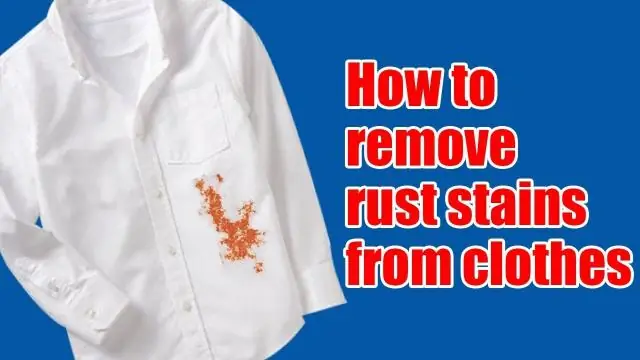
How to remove rust from white clothes at home: proven and effective methods, expert recommendations. Reviews
How To Remove Blueberries From Clothes And Other Surfaces, Removing Stains From White, Jeans, Various Types Of Fabrics

Ways and means to help remove blueberry stains. Features for different fabrics and surfaces. How to wash your hands
How To Remove Engine Oil From Clothes, How To Remove Stains From It From Fabric
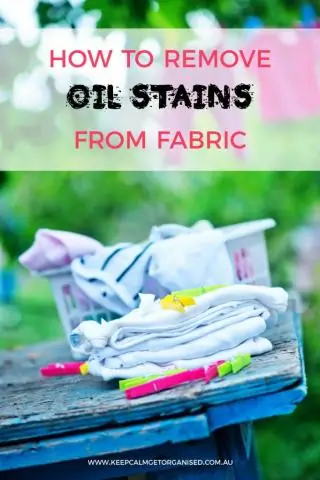
Features of the fight against fresh and old stains from engine oil. Ways to solve the problem for different types of fabrics. Step by step instructions. Video
How To Remove Nail Polish From Clothes And Remove Stains From Various Surfaces
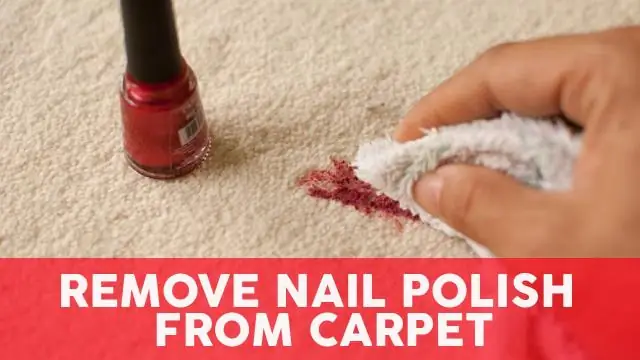
Means and methods for removing nail polish from various types of fabrics and other surfaces. Recommendations and reviews
How To Remove Fuel Oil From Clothes At Home And How To Remove Stains From It From Various Types Of Fabric
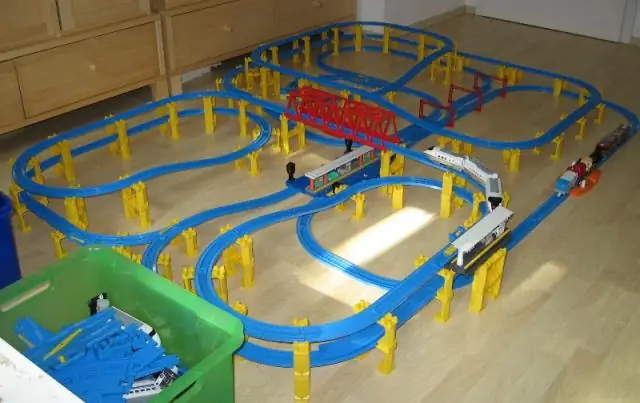
How to remove fuel oil from clothes at home. Tips for using proven self-cleaning products for various types of fabrics. Video
